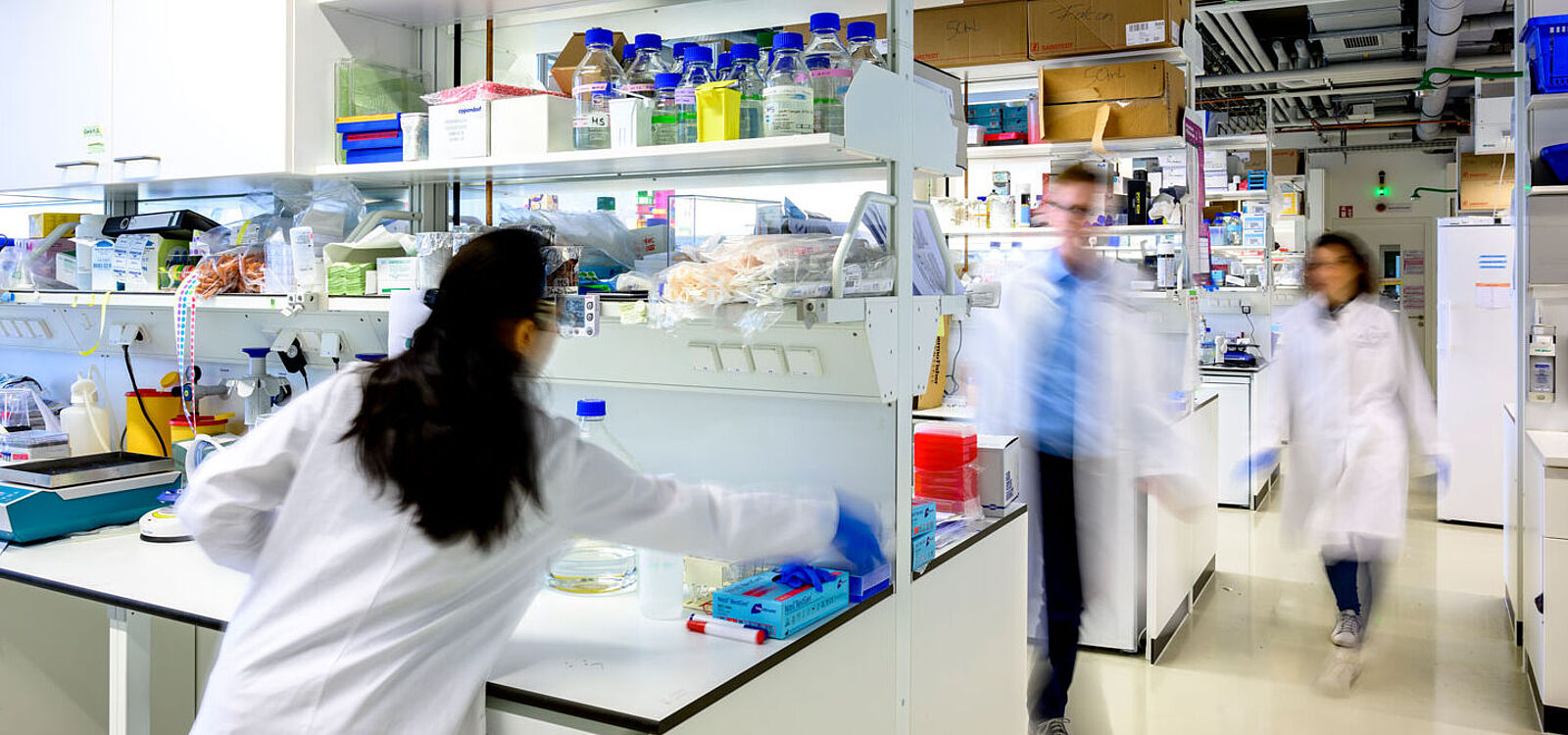New Approach against FTD Tested in Lab Study
Publication in “Science Translational Medicine”

In laboratory experiments, researchers from Munich and the USA tested a novel approach for treating a variant of frontotemporal dementia caused by the genetic deficiency of the protein “progranulin”.
To date, there is no cure for frontotemporal dementia (FTD), a brain disease that causes memory loss as well as speech disorders and changes in personality. One of the potential triggers is a genetic insufficiency of the protein “progranulin”. This affects the cellular disposal system, causing toxic substances to accumulate in the brain. This leads to brain inflammation, neuronal death and an associated massive dysfunction of the nervous system. Now, researchers from the Faculty of Medicine at Ludwig-Maximilians-Universität München (LMU) and DZNE, in close collaboration with the US company Denali Therapeutics, have developed an approach that enables to replace the missing protein in the brain.
“We inserted progranulin into the genome of a virus,” explains Dr. Anja Capell, a senior scientist at LMU’s Biomedical Center. Next, the team injected the modified viruses into the bloodstream of mice with a hereditary deficiency of progranulin. “The virus targeted liver cells, which then produce progranulin in large quantities and release it into the blood.” This approach avoids injecting viruses directly into the brain, with the associated risk of major side effects. For this method to work, the researchers had to use a trick to get past the blood-brain barrier. This tissue normally blocks the exchange of biomolecules between blood and brain: A special transporter molecule (“brain shuttle”) developed by Denali Therapeutics permits very effective transport across this barrier.
Tests in stem cells
“After administering the virus once, we checked whether the symptoms were reduced,” says Professor Dominik Paquet from LMU’s Institute for Stroke and Dementia Research, and member of the SyNergy Cluster of Excellence. It turned out that deficits in protein degradation, deposition of toxic proteins, brain inflammation, movement disorders and the death of neurons were all massively reduced. “As the next step, we investigated in stem cell models whether this approach can be transferred to humans.” Also in these laboratory experiments, there was a significant reduction in disease symptoms.
“Such comprehensive multidisciplinary studies are possible only in a team. I’m glad that our SyNergy Cluster of Excellence offers us unique opportunities in this regard,” says Prof. Christian Haass from LMU’s Biomedical Center, speaker of SyNergy and DZNE scientist. “At the same time, this study also shows the importance of intensifying our collaboration with leading biotech companies so that we can bring our research to clinical practice as rapidly as possible for the benefit of patients.”
Original publication
Rescue of FTLD-associated TDP-43 pathology and neurodegeneration bym peripheral AAV-mediated expression of brain-penetrant progranulin.
Marvin Reich et al.
Science Translational Medicine (2024).
DOI: 10.1126/scitranslmed.adj7308
June 2024
